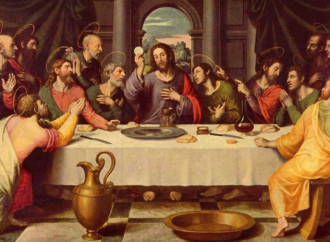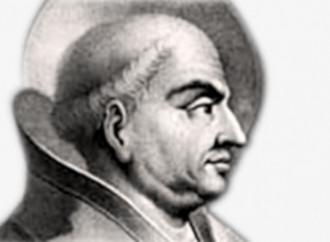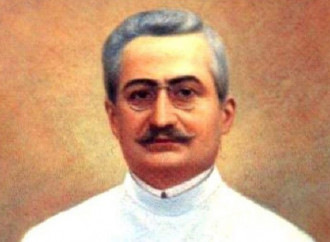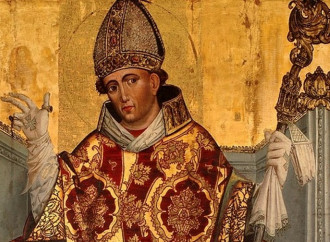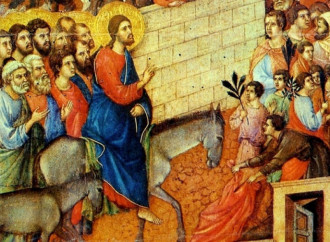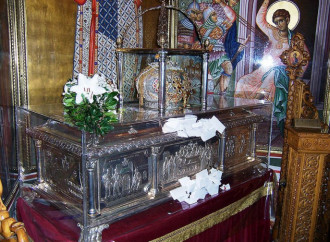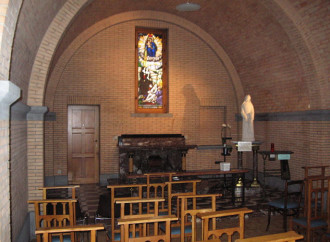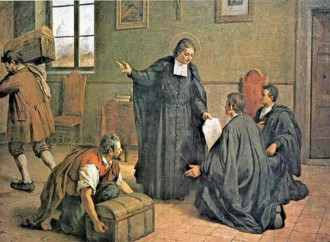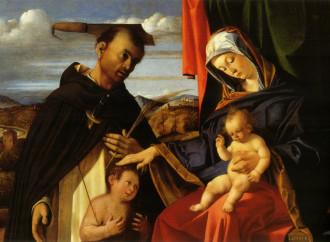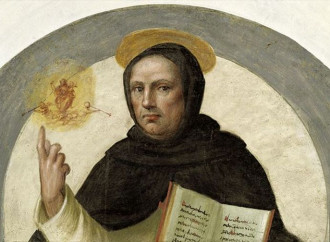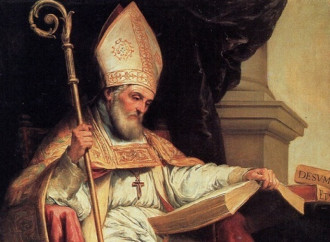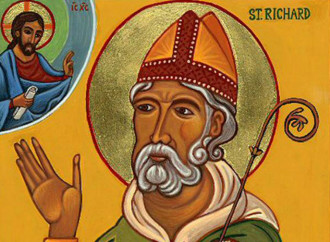Holy Thursday
The first day of the Easter Triduum, Holy Thursday prepares us for the Mysteries of the Passion and recalls what Jesus lived through on the eve of his death on the cross, questioning every believer with the words of the psalmist: “What will I give back to the Lord for all the benefits He has given me?”.
Saint Martin I
St Martin I (c. 600-655) showed his mettle when he was elected pope in July 649, because he did not wait for the consent of the Byzantine emperor Constant II, going against the practice that had been established from Justinian onwards, and which lasted more than two centuries (537-752)
Saint Joseph Moscati
“My place is by the side of the sick”, was the mantra of the medical luminary Saint Giuseppe Moscati (1880-1927), a model for every doctor and every man.
Saint Stanislaus
The main patron saint of Poland was dear to John Paul II, who as a new pontiff wanted to return to his homeland in April 1979, the ninth centenary of the martyrdom of St Stanislaus (1030-1079). But then the communist regime blocked Wojtyla, forcing him to postpone his apostolic pilgrimage to June.
Palm Sunday
Palm Sunday marks the beginning of Holy Week, as we are reminded in the admonition preceding the liturgy and introducing the procession: “Jesus enters Jerusalem to fulfill the mystery of death and Resurrection”.
Saint Demetrius of Thessalonica
He is highly venerated in the East, where the Orthodox Churches attribute to him the title of Megalomartyr (great martyr) and his cult is almost equal to that of Saint George. Saint Demetrius of Thessalonica offered his testimony of faith in Christ with his blood.
Saint Julia Billiart
Julia Billiart (1751-1816), a French woman, was the founder of an institute rich in vocations, the Sisters of Notre Dame of Namur. From an early age she had such a relationship with God that the bishop of Ghent, Monsignor Maurice de Broglie, told the saint that she had saved more souls through sharing her rich interior life with the nuns than through the rest of her fervent apostolic activity.
Saint John Baptist de La Salle
The educational innovations of Saint John Baptist de La Salle (1651-1719) were so important that he became a giant in the history of pedagogy. It is no coincidence that Pius XII proclaimed him patron saint of educators and teachers.
Saint Peter of Verona
Among the most depicted saints due to the circumstances of his martyrdom, Peter of Verona (c. 1205-1252) was born from parents involved with Catharism, the heresy that he fought throughout his life, accomplishing numerous conversions.
Saint Vincent Ferrer
His life turned around when Jesus appeared to him between Saint Dominic and Saint Francis, ordering him to devote himself to preaching. The sermons of St Vincent Ferrer (1350-1419) were very vigorous but always based on charity, which led him to travel tirelessly to admonish souls to conversion. Because of his apocalyptic style, his contemporaries called him “the Angel of Judgement”.
Saint Isidore of Seville
The first encyclopaedia was born from the genius of Saint Isidore of Seville (c. 560-636) and it is for this reason that during the pontificate of John Paul II he was proposed as patron saint of the Internet and those who work on it, based on an initiative of a group of Internet users.
Saint Richard of Chichester
Generous with the poor and aware of the immense value of the Mass, the Englishman Saint Richard of Chichester (1197-1253) defended the Church from the king's interference and promoted a robust reform of the clergy in his diocese.

